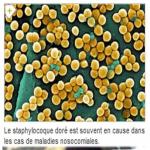Herbal tea 279: Condyloma Definition Natural treatment Condyloma
Newer in our shop. We offer you at a cheap price a natural remedy made with medicinal plants and leaves. Our remedy fights against condyloma genital warts in a short time. It has been proven effective and has no side effects. People have been testifying about this product. Please place your order now.
Please reach us at http://wa.me//+22967546677
Click below to order clove oil
Book an appointment with lady feranmi on
29,41€ excl. tax - 30,00€ inc. tax
- Condition : new
- Supplier : Afrique-bio.
- Manufacturer : Afrique-bio
WHAT IS CONDYLOMA? WHAT'S THE CURE?
A condyloma is a wart of sex in women or men. Indeed, it is the physical manifestation of the infection of the HPV virus (Human PapillomaVirus) of which there are a hundred subtypes. Thus, condyloma is called a genital wart. He may occur in men or women on the genitals and around the anus. Occasionally, this infection may also be present in the mouth, urethra, vagina, or cervix.
But how to cure condyloma naturally? To find the answer to this question, just click on the image to read for free the procedure of our BIO remedy.
Did you have any concerns or questions for us?
Please reach us at http://wa.me//+22967546677
What are the symptoms of condylomas? Click on the Image
Symptoms of Condylomas
Please reach us at http://wa.me//+22967546677
Genital warts or condylomas are skin lesions that involve the genitals or anal region.
- Most people who are infected have no symptoms.
- There may be local irritation and rarely bleeding.
- Condylomas can cause anxiety in people with the infection.
Symptoms usually include
In women: On the vulva or in the vagina;
In men: on the penis and testes;
Or around the anus in both cases.
However, it should be known that this virus can remain in the body for several months, causing symptoms or not. Thus, people can be contagious even without obvious warts.
Causes of Condyloma
ILLUSTRATION, AND CAUSE OF INFECTION CONDYLOMA
Please reach us at http://wa.me//+22967546677
Please contact us via WhatsApp by clicking CALL
Genital warts or warts are caused by the human papillomavirus, which is also known as HPV. It is a sexually transmitted infection and, as is often the case, is more common among people under 30.
If it is estimated that 50% of sexually active people will be infected with HPV at some point in their lives, not all will contract genital warts.
As with any other sexually transmitted infection (STI), human papillomavirus is transmitted during unprotected sexual intercourse (vaginal, oral-genital, or anal). Thus, HPV infection can cause sores in the mouth, tongue, and throat during unprotected oral sex, and damage to the anus and rectum during anal sex. Condoms significantly decrease the risk of transmitting the virus, although they do not fully protect, because the virus may be present in areas not covered by a condom.
Warts may appear several months after the virus is infected.
Indirect transmission (such as water and towels) is possible but rare. There is also a risk of mother-to-child transmission during childbirth.
People with a weakened immune system are more vulnerable and thus more likely to develop warts. If you have another disease, an unhealthy lifestyle, and an inadequate diet, your immune system may be weakened and this makes genital warts more likely to occur.
When genital warts or condylomas are visible, the risk of transmitting HPV is highest.
How does condyloma spread?
The virus that causes genital warts is easily spread from person to person through sexual contact.
Genital warts can spread from person to person during vaginal or anal sex.
The virus may spread through skin-to-skin contact with the person’s close genital contact without sexual penetration.
Areas not covered by a condom can become infected.
The virus is more likely to be transmitted when warts are present, but the virus can be transmitted after warts have disappeared.
Lesions may develop in the mouth or throat or on the lips through urogenital sex.
Women with genital warts during pregnancy can transmit the virus to the baby during a vginal delivery.
You cannot get genital warts by sharing baths or towels, in swimming pools, by touching toilet seats or b, y sharing cups or glasses.
Prevention of this infection? Condyloma Curative Treatment
Condom use is relatively ineffective in preventing contamination because lesions are not confined to the penis or vagina. Prevention is therefore quite complicated to implement. To avoid contaminating anyone, it is better to avoid sexual intercourse before being treated. In terms of prevention, the HPV vaccine remains the only alternative.
Also, protecting yourself with condoms during intercourse helps minimize the risk of transmission. The immune system usually eventually kills the virus.
In all cases, regular Pap tests (every 3 years when results are normal) are recommended for cervical cancer screening in women.
Also, because HPV is usually transmitted through sexual contact, screening for other STIs is recommended.
What is the relationship between Condylomas and cancer?
Of more than 100 different HPV strains, about 30 to 40 are sexually transmitted. However, very few of these strains are responsible for the appearance of genital warts.
Other strains of the virus are associated with warts elsewhere on the body. Some strains of papillomavirus, different from those that cause genital warts, can cause cervical cancer. This happens when the papillomavirus affects the growth of specific cells, which can lead to cervical cancer in women or penile cancer in men.
As mentioned above, when there is risktaking during sexual intercourse, it is important to remain alert to the different viruses that may have been transmitted, as it is possible that several types of HPV have been transmitted, and the appearance of genital warts does not exclude that the papillomavirus responsible for cervical cancer has also been transmitted.
But having condylomas does not mean that the strain causing cervical cancer in women is present in the body.
Remember that women must have a Pap test regularly (every 3 years), from the age of 21. The HPV test should be requested during these smears and if in doubt, a biopsy - the extraction of a tissue sample, which is then analyzed to detect precancerous and cancerous cells - can be performed.
Genital warts and risk factors
As with most STIs, women are statistically more likely to be infected at a young age (16-19 years) and men at a later age (20-24 years). Risk factors include the following:
Previous infection with another STI (increasing the risk of a new STI infection) becoming sexually active at a young age (the immune system may not be mature enough to fight the virus itself)
Immunosuppression
Smoking
Infection may also be transmitted through unprotected contact before penetration. If you have a sudden, severe outbreak of genital warts, see a doctor as soon as possible before it spreads.
The growth and severe and rapid spread of genital warts can be a sign of a problem with your immune system. If necessary, your doctor may do tests in addition to the physical examination to check for STIs such as HIV.
How to protect yourself from genital warts?
To prevent genital warts, it is recommended to use a condom if you or your partner has condylomas. However, condoms do not provide 100% protection against warts because they may be located at the base of the penis or vulva.
Genital warts are transmitted by direct skin contact, and the risk of infection is increased by unprotected sex and frequent changing of sex partners.
Condoms offer the best protection against direct contact with warts. However, it protects only if the warts are only on the penis or vagina and the condom completely covers the affected area.
People may also become infected through means other than sexual intercourse. Less commonly, a shared bathroom or sharing of infected towels can lead to human papillomavirus infection.
Will anyone in contact with the virus develop genital warts?
Not everyone who comes into contact with HPV will necessarily develop genital warts.
Individual risk factors, such as the immune system, play an important role in the development of the infection. Thus, regular exercise, a healthy diet, and adequate sleep strengthen the immune system and can help reduce risks.
Once infected, the time to incubation varies widely, from three weeks to several years.
Condylomas are also called condylomas acuminata, genital condylomas, or genital warts.
The appearance of condylomas may vary. Condylomas most often resemble cauliflower-shaped or rooster-ridged growths.
Condylomas are painless lesions that may be on the skin or mucous membranes of the genital and anal areas.
HPV is one of the most common sexually transmitted infections (STIs) in Canada. Human papillomavirus (HPV) infection can cause condylomas. Infection with HPV 6 and VPH11 strains is the main cause of condylomas.
Condylomas can be transmitted by oral-genital contact and by contact with the genitals with or without penetration.
Please reach us at http://wa.me//+22967546677
Click below to order clove oil
Book an appointment with lady feranmi on
@#Tamarinier #noir Les bienfaits du Tamarinier Noir
Add a comment









